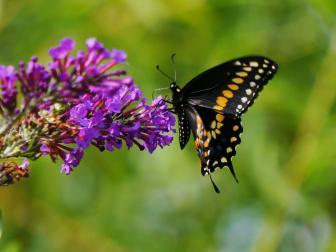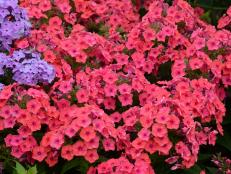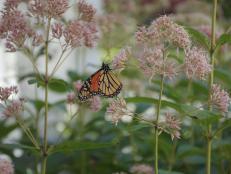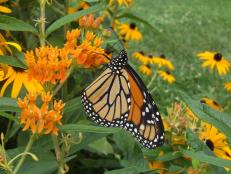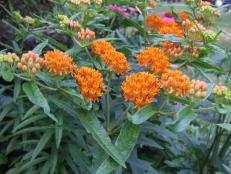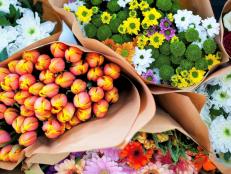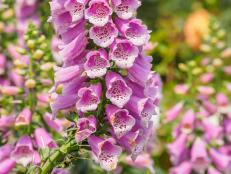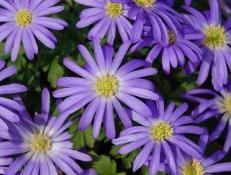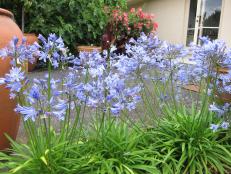Create a Monarch Waystation in Your Garden
Use our guide to make a monarch waystation in your yard. You’ll help save monarch butterflies while adding beauty to your garden.
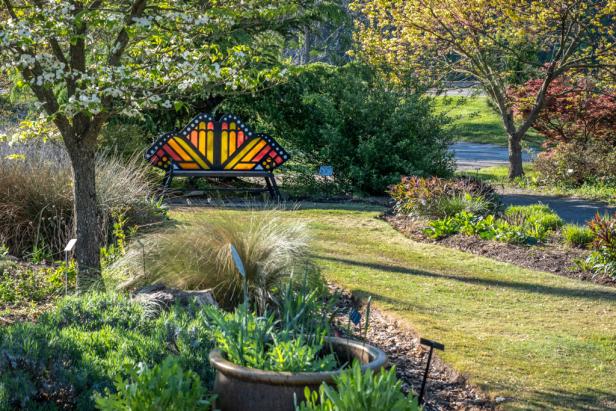
Elle Colquitt/University of Tennessee Gardens
This monarch waystation at the University of Tennessee Gardens serves as a "pit stop" on monarch butterflies' migration route.

Every fall, millions of monarchs migrate south to escape the cold. From roughly late April to May, they fly back from their winter habitats in Mexico or California to grasslands, roadsides, prairies and meadows across the US and Canada. Sadly, their warm weather homes are disappearing, lost to developments, pesticide use and climate change, and these lovely butterflies are disappearing with them.
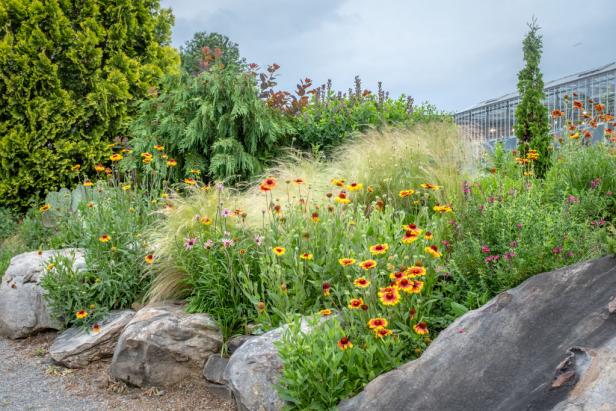
Elle Colquitt/University of Tennessee Gardens
Monarchs are especially attracted to flowers in shades of red, orange, yellow and pink.
Monarchs are more than black and orange insects that add beauty to our gardens. They’re valuable pollinators and a food source for other insects, small animals and birds.
What is a Monarch Waystation?
Many parks, schools, individual gardeners, conservation groups and others are rallying to save the monarchs. The National Park Service says that habitat loss along their migration routes is one of the biggest threats to their survival and creating monarch waystations is a great way to help them.
A monarch waystation is simply a place where monarchs can stop to rest, feed and lay their eggs. Monarchs sometimes fly as far as 50 miles a day while migrating, so finding a monarch-friendly spot is vital.

American Meadows/Theodore Piersol
Sun-loving cosmos have abundant nectar for visiting monarch butterflies.
What is Monarch Watch?
Monarch Watch, based at the University of Kansas, is a nonprofit program that focuses on monarch research, conservation and education. You can become a "citizen scientist" and participate in its work by ordering a monarch tagging or raising kit or by reporting any tagged monarchs you see. The website sells the kits, books about monarchs and other items. Monarch Watch also lists plants to grow for monarchs and other pollinators in the Northeastern US. Read on to find plants to grow in other regions.

American Meadows/Nancy Rakich
Plant something for monarchs that arrive later in the season, like these late-blooming, nectar-filled zinnias.
Planning Your Monarch Waystation
Create your monarch waystation in a garden you already tend, a wild portion of your property or a new area. How big does a monarch waystation need to be? Monarch Watch recommends a minimum of 100 square feet, which can be one area or the total of different areas. A monarch waystation garden plan can be small enough to fit in a window box or as big as you want.
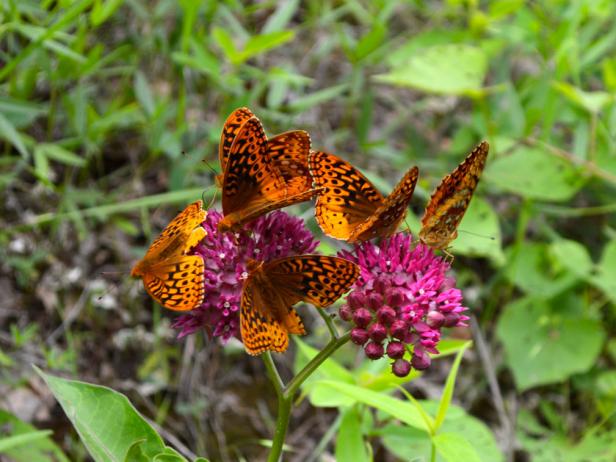
American Meadows/Donn Henley
Milkweeds (Asclepias) are often considered weeds and eliminated with herbicides, but they're vital host plants for female monachs when they're ready to lay eggs. The caterpillars eat them.
Start by choosing the right location for your waystation. Pick a site with full sun and plants that take full sun. The soil should drain easily and not contain much clay.
How to Create a Butterfly Garden
Learn how to add a butterfly garden to your yard and make it a destination for these beauties.
Selecting Host Plants for Monarch Butterflies
Monarchs need host plants during their lifetimes. Host plants are specific plants on which living organisms live and feed.
Adult female monarchs lay their eggs on just one host plant: milkweed. When the eggs hatch, monarch caterpillars eat only milkweed. Adult males and females feed from many kinds of nectar plants.
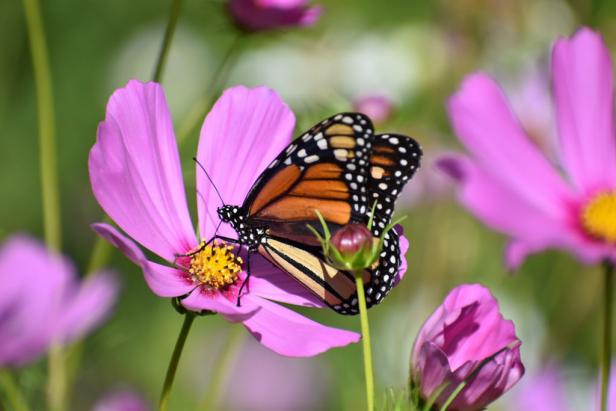
American Meadows/Heather Johnson
Purple cosmos, members of the daisy family, are summer to fall blooming flowers with abundant nectar and flat "faces" that make it easy for butterflies to land.
Monarch Watch recommends putting at least 10 milkweeds in your monarch waystation garden plan. They suggest two or more local species that grow in most regions, such as common milkweed (Asclepias syriaca), swamp milkweed (A. incarnata) and butterfly weed (A. tuberosa). Some are sold online or in nurseries.
Choosing Nectar Plants for Monarch Butterflies
For nectar, grow native plants, cultivated plants or both. Combining a variety of annuals, biennials and perennials is ideal, so something will always be in bloom. Diverse plantings also help attract other pollinators.
Garden phlox, ironweed (Veronica spp.), zinnias, butterfly bushes, Chaste trees (Vitex), coneflowers, lantanas, pentas and salvias are good choices. For sustained sources of nectar, use plants that bloom continuously or plants with staggered bloom times. See The National Wildlife Federation map to find nectar plants for your region.
Space the plants in your waystation a little closer together than shown on their tags so they'll offer some shelter for the butterflies.
Using Sustainable Garden Practices
Mike Lizotte, co-owner of American Meadows and author of Mini Meadows: Grow a Little Patch of Colorful Flowers Anywhere Around Your Yard, says some gardeners use chemicals to kill vegetation while prepping their waystation sites. "That's harmful for pollinators. Choose a method that supports your efforts in a positive way."
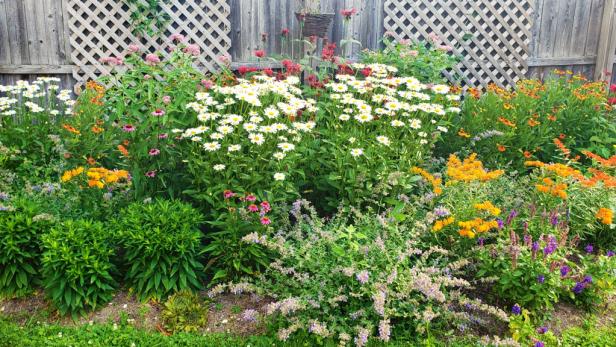
American Meadows
Design a monarch waystation garden plan with a variety of flowers like sulphur cosmos, false sunflower, liatris and goldenrod.
Once your plants start growing, avoid pesticides and herbicides, or spot treat problems in the evenings or after dark when pollinators aren’t active. Water, apply mulch and organic fertilizer, hand-pull weeds and deadhead flowers as needed. Spray pests with soapy water or blast them with water from a hose. Welcome spiders and ladybugs; they’ll gobble up insect pests.
"Whether you plant from seed or plant material," Mike adds, "it may take two or three years for your waystation to come into full bloom. Don't get discouraged and enjoy the process. The monarchs will thank you!"
What is a Certified Monarch Waystation?
Once your monarch waystation meets certain requirements, you can submit a small, non-refundable fee and certify it online at Monarch Watch. You'll get a certificate and they'll add you to a registry of waystations in public and private gardens, schoolyards, nature centers, botanical gardens, zoos, nurseries and other places around the US. Want to see a waystation? Check the list. Unless it's a public place, ask permission to visit.
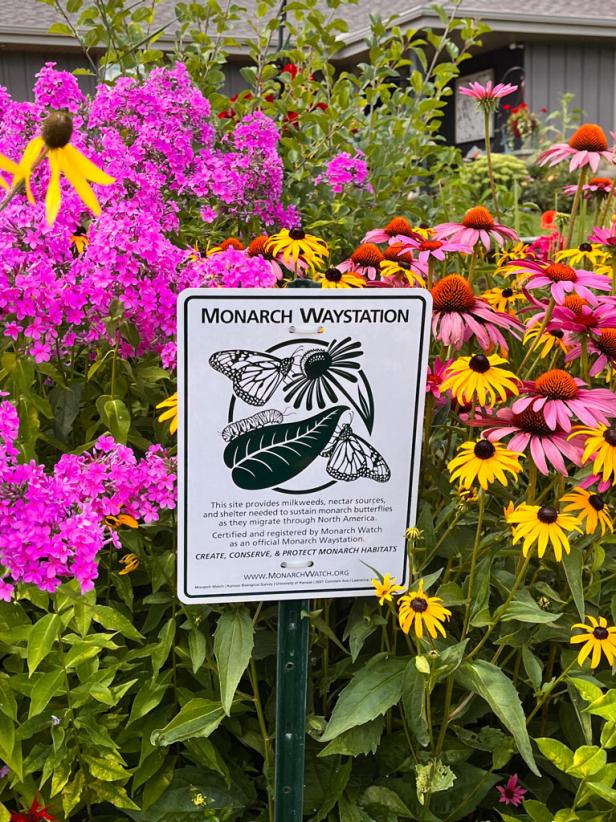
American Meadows
Register your waystation at Monarch Watch to receive a certificate and paper sign. Metal signs are available for sale.

.-Battle-on-the-Beach-courtesy-of-HGTV.-.jpg.rend.hgtvcom.196.196.suffix/1714761529029.jpeg)




